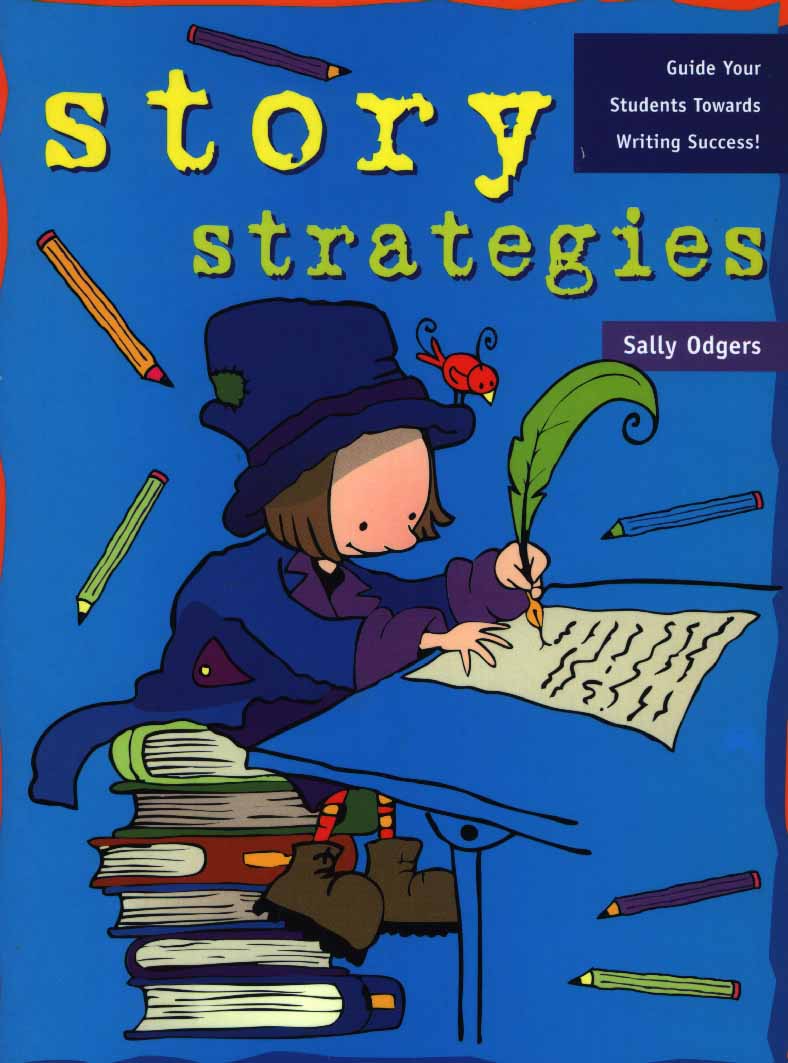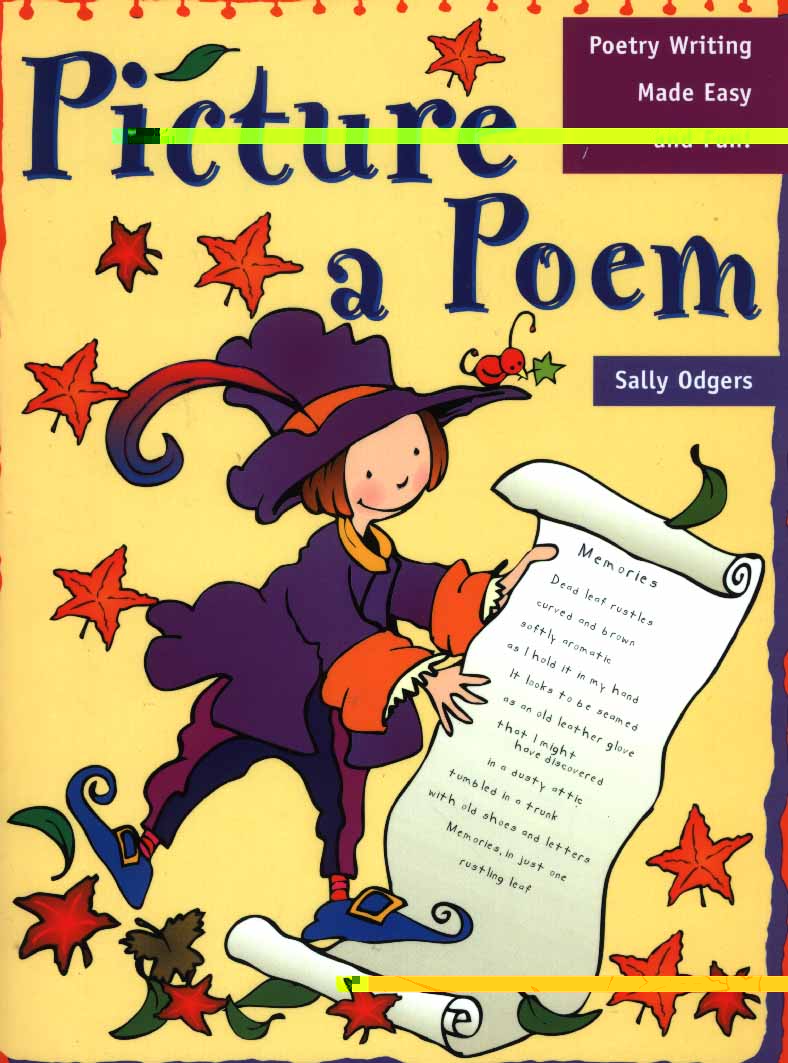Back to BOOKSHOP 2.
PICTURE A POEM and STORY STRATEGIES.
 ........................
........................
This pair of books from Blake Education are all about teaching children (and older writers too!) fun and effective ways to produce better poems and stories. Includes ideas, strategies, storyshaping, troubleshooting, rhythm-clapping and much more.
Sample from PICTURE A POEM.
Unrhymed Poetry
Un-rhymed poetry needs neither rhyme nor any set form, but it still needs rhythm and a good choice of words. If written without this awareness, it will be nothing but prose arranged in an unusual manner.
I have a brown dog.
We went to the park for a walk.
While we were there, I met my friend with his dog.
We played fetch with my friend's tennis ball.
It was great fun!
This is really a short recount rather than a poem. To make it into an un-rhymed poem it would be necessary to make some alterations - perhaps along the following lines.
Brown dog and I.
Went walking in the park.
By the pond we met a friend
Who also had a dog.
We played at fetch all afternoon
Four friends having fun!
Sample from STORY STRATEGIES.
Fiction
is the most difficult and (to many) the most rewarding type of creative writing. It is probably the one that is least understood.Non-fiction writing can be used to practise structure, planning and the use of appropriate words, but children must be made aware that this is not the same as a fiction story.
Re-tellings should be written sparingly as an exercise in structure. Children should be made aware of "moral right". Re-telling a story from a book, from television, a computer game or film is not the same as writing an original story and should be treated as a completely different task.
Personal stories are usually anecdotal in form, and although they may form the basis of fiction stories, they are not to be confused with them.
Does it matter if these kinds of writing are confused? On the face of it, it does not, but children who have an ambition to write for competition or for publication must know exactly what they are writing, just as a fashion designer must know the difference between formal and informal wear.
Back to BOOKSHOP 2.